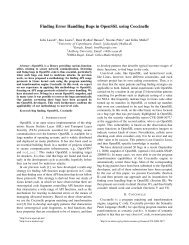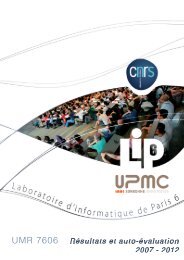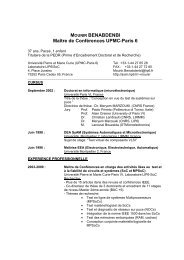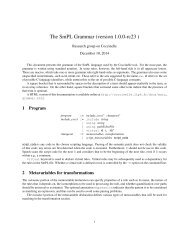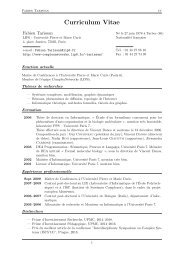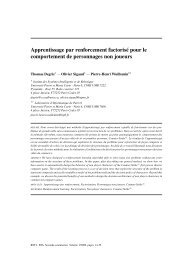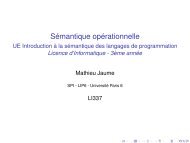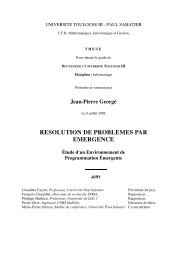Proceedings [PDF] - Measurement and Analysis of P2P Activity ...
Proceedings [PDF] - Measurement and Analysis of P2P Activity ...
Proceedings [PDF] - Measurement and Analysis of P2P Activity ...
You also want an ePaper? Increase the reach of your titles
YUMPU automatically turns print PDFs into web optimized ePapers that Google loves.
International Conference Advances in the <strong>Analysis</strong> <strong>of</strong> Online Paedophile <strong>Activity</strong> Paris, France; 2-3 June, 2009<br />
<strong>of</strong>fender (SD= 30.11), polygraph testing was employed to validate the<br />
<strong>of</strong>fenders self reports, but the validity <strong>of</strong> this method <strong>of</strong> validation has been<br />
questioned. Seto (2009) suggests however on the basis <strong>of</strong> his research with<br />
over 300 child pornography <strong>of</strong>fenders that this group is unlikely to be<br />
convicted for contact sexual <strong>of</strong>fences. 4% <strong>of</strong> 301 child pornography <strong>of</strong>fenders<br />
were convicted for sexual abuse contact <strong>of</strong>fences over a 3.9 year period. This<br />
study is however based upon reconviction data <strong>and</strong> not <strong>of</strong>fender self report.<br />
Preliminary findings from ongoing doctoral research employing documantary<br />
analaysis <strong>of</strong> online grooming <strong>of</strong>fender case files <strong>and</strong> conducted with a Police<br />
High Technology Crime Unit in the UK (Martellozzo, 2009) suggests that:<br />
1. The majority <strong>of</strong> sex <strong>of</strong>fenders in the study began to satisfy their<br />
fantasies <strong>of</strong> abusing children by simply exploring cyberspace. In doing<br />
so they quickly discovered sites that would satisfy their imagination to<br />
the point <strong>of</strong> actively engaging in erotic dialogues with children <strong>and</strong><br />
other <strong>of</strong>fenders <strong>and</strong> downloading pornography.<br />
2. The majority <strong>of</strong> groomers sent undercover police <strong>of</strong>ficers some type <strong>of</strong><br />
adult pornography or child abuse images during the grooming process.<br />
Almost two-thirds <strong>of</strong> the subjects exposed themselves to the<br />
undercover <strong>of</strong>ficer via photograph or web-cam. However, some<br />
suspects used images as a grooming tool, most stated that they used<br />
them principally for sexual gratification.<br />
3. Existing literature demonstrates that sex <strong>of</strong>fenders have a tendency to<br />
deny responsibility for their <strong>of</strong>fending <strong>and</strong> to attribute blame to either<br />
the victim or to circumstances (Gudjonnssen, 1988). Martellozzo’s<br />
(2009) research with online <strong>of</strong>fenders demonstrates that they tended to<br />
minimise their intention to sexually abuse a child. Several subjects<br />
claimed the communication was just ’fantasy’ <strong>and</strong> that they thought<br />
they were talking to an adult. However a significant proportion <strong>of</strong><br />
subjects who met the undercover police <strong>of</strong>ficers thinking they were<br />
meeting a 12 year old girl. Of these subjects only one declared his<br />
intention to abuse the child. The others were in denial even when found<br />
in possession <strong>of</strong> condoms <strong>and</strong> other child abuse items.Respondents<br />
45


![Proceedings [PDF] - Measurement and Analysis of P2P Activity ...](https://img.yumpu.com/32964521/45/500x640/proceedings-pdf-measurement-and-analysis-of-p2p-activity-.jpg)

